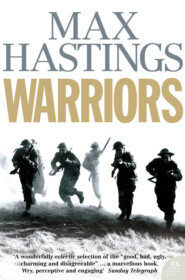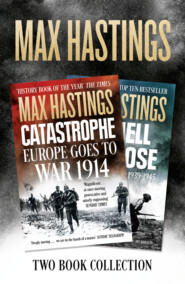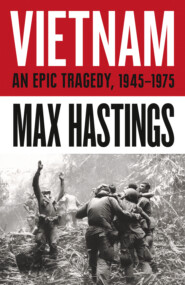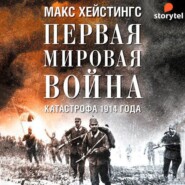По всем вопросам обращайтесь на: info@litportal.ru
(©) 2003-2025.
✖
Chastise: The Dambusters Story 1943
Настройки чтения
Размер шрифта
Высота строк
Поля
OTU – Operational Training Unit
RAAF – Royal Australian Air Force
RAFVR – Royal Air Force Volunteer Reserve
RCAF – Royal Canadian Air Force
RNZAF – Royal New Zealand Air Force
SASO – Senior Air Staff Officer; comparable to an army or divisional commander’s chief of staff
USAAF – United States Army Air Force
WAAF – Women’s Auxiliary Air Force; thus a woman serving at an RAF station would be described as a ‘Waaf’
w/op – Wireless-operator
Narrative of operations uses a twenty-four-hour clock, while the twelve-hour civilian clock is used for other timings.
Bomber Command in February 1943 comprised around two thousand aircraft including trainers – the number varied daily, and significantly fewer were immediately serviceable – of which six hundred were ‘heavies’. Each of seven operational Groups was commanded by an air vice-marshal, and contained variously five to ten squadrons. A squadron was composed of eighteen to twenty-four aircraft, confusingly led by a wing-commander, and subdivided into two or three flights, each commanded by a squadron-leader.
Introduction (#litres_trial_promo)
There were dams; a dog with an embarrassing name; a movie; a march composed by Eric Coates. These memories of Operation Chastise, the ‘bouncing bomb’ attack which burst open north-western Germany’s Möhne and Eder reservoirs on the night of 16/17 May 1943, cling to the consciousness of millions of people of all ages, both sexes and many nations, who may know little else about the Second World War. Wing-Commander Guy Gibson’s biographer Richard Morris has written: ‘The story of 617 Squadron’s breaching of the dams has joined that group of historically-based tales – like King Arthur, or Robin Hood – which defy all efforts at scholarly revision.’
Much that we think we know is wrong. Those of us who read Paul Brickhill’s 1951 book, then watched its 1955 screen progeny, the most popular British war film of all time, should blush to remember that we embraced The Dam Busters with special enthusiasm because the raid seemed victimless, save for the fifty-three dead among the gallant young men who carried it out. In truth, however, something approaching 1,400 people – almost all civilians and more than half French, Polish, Russian and Ukrainian mostly female slaves of Hitler – perished in the Möhnekatastrophe, as modern Germans call it; more than in any previous RAF attack on the Reich. That tragic outcome deserves emphasis, alongside our awe at 617 Squadron’s achievement. It is fascinating that Guy Gibson afterwards reflected uneasily about this, as his superiors never did, writing in 1944: ‘The fact that people … might drown had not occurred to us. But we hoped that the dam wardens would warn those living below in time, even if they were Germans. No one likes mass slaughter and we did not like being the authors of it. Besides, it brought us in line with Himmler and his boys.’
This book represents an emotional journey from my own childhood; from the day when, at boarding school, I first thrilled to Richard Todd’s portrayal of the twenty-four-year-old Gibson, who led 617 Squadron on that fateful May night. Many legendary feats of courage have been performed by warriors who clung to some bleeding piece of earth: the Three Hundred at Thermopylae; Horatius on the bridge before Rome; the Guards’ defence of Hougoumont at Waterloo; Joshua Lawrence Chamberlain’s 20th Maine on Little Round Top at Gettysburg; C Company of the 24th Foot holding Rorke’s Drift.
By contrast, the deed attempted in May 1943 by 130 British, Canadian, and Australian airmen, together with a single American and two New Zealanders, required qualities of a different order. Almost all were of an age with modern gap-year adolescents, or students at university. They embarked in cold blood on a mission that many recognised was likely to kill them, and that would require exceptional courage, skill and luck to succeed. They lifted their big, clumsy bombers from the tranquillity of a summer evening in the midst of the Lincolnshire countryside, barely four decades after the Wright brothers initiated heavier-than-air flight. For two and a half hours they raced through the moonlit sky towards Germany, at a height that made power cables as deadly a menace as anti-aircraft fire. They then attacked Hitler’s dams, flying straight and level at 220 mph, much lower than the treetops and less than a cricket pitch’s length from the lakes below, to unleash revolutionary four-and-a-half-ton weapons created by the brilliance and persistence of Barnes Wallis, a largely self-taught engineer. Half of 617’s aircraft which got as far as Germany failed to return, but two of the biggest man-made structures in the world collapsed into mud and rubble, releasing hundreds of millions of tons of water upon the Reich.
The Allied bomber offensive has become one of the most controversial aspects of the Second World War. Some critics, not all of them German or Japanese, denounce the Western Allied assaults upon cities and their inhabitants as a war crime. The 1945 fire-bombing campaign by American B-29 Superfortresses killed far more people in Tokyo and other Japanese cities than did the atomic bombs later dropped on Hiroshima and Nagasaki. The concept of air bombardment of civilians causes many twenty-first-century people discomfort, indeed repugnance. Contrarily, it is a source of bitterness to some descendants of the RAF’s wartime bomber crews that the public prefers to lavish legacy adulation on the Spitfire and Hurricane pilots of the Battle of Britain – defenders – than on their comrades the attackers, who bombed Germany at the cost of enduring losses much greater than those of Fighter Command. Australian Dave Shannon of 617 Squadron denounced in old age ‘sanctimonious, hypocritical and grovelling criticism about things that were done in a total war’.
Where, in all this, does the saga of the dambusters rightfully belong? The fliers contrived a feat that caused all the world to wonder – the Allied nations with pride, the German people and their leaders with horror and apprehension. Rumours swept the Reich that thirty thousand victims had perished beneath the floods. Though the Lancaster crews were drawn from the RAF’s Bomber Command, the force that nightly rained fire and destruction on Germany’s cities, few even among its critics failed to perceive a nobility about the bravery displayed that night. In the spring of 1943, after nearly four years of austerity, unpalatable food, family separations and spasmodic terrors, only lately ameliorated by a thin gruel of successes, the British people were weary. The dams raid lifted their spirits, revived flagging confidence in their own nation’s powers, as had few events since the desert victory at El Alamein six months earlier. We shall discuss below its effects on the Nazi war machine, which RAF planners aspired to cripple.
I was born at the end of 1945, and thus was five when Paul Brickhill’s best-selling account of Chastise was published, nine when the film was released. Both book and movie made a profound impression. I memorised the names of almost every one of 617’s pilots; assembled and painted plastic models of the Avro Lancasters they flew; became intimately familiar with Enemy Coast Ahead, Gibson’s posthumously published memoir. As an adult, I began to study wars, first as a correspondent and eyewitness in faraway places, then as an author of books. Although my ideas became much more nuanced than those of childhood, I was well served by familiarity with a host of World War II memoirs and histories.
In 1977 I was commissioned to write Bomber Command, a study of the British strategic offensive. In those days, thousands of former aircrew were still alive, together with some commanders. I interviewed at length Air Chief Marshal Sir Arthur Harris, 1942–45 C-in-C of Bomber Command; Air Chief Marshal Sir Ralph Cochrane, ex-AOC of 5 Group, to which 617 Squadron belonged; former senior staff officers including Air Vice-Marshal Syd Bufton, director of bomber operations at the Air Ministry; Marshal of the RAF Lord Elworthy, who served as a pilot, station commander and staff officer at Bomber Command HQ; together with the inventor of the ‘bouncing bomb’, Sir Barnes Wallis, and wartime bombing adviser Lord Zuckerman. Among former 617 aircrew, I met Group-Captain Leonard Cheshire, VC, and Air Vice-Marshal Sir Harold ‘Micky’ Martin. Many of these disagreed profoundly with my conclusions, but their testimony was invaluable.
The RAF’s Battle of Britain Flight flew me as a passenger from Farnborough to Coningsby in its only surviving Avro Lancaster, an unforgettable experience. I explored every crew position, and occupied the rear turret – albeit with most of my long back protruding through its sliding doors – while an accompanying Spitfire and Hurricane made passes, to give me a gunner’s-eye view of an attacking fighter. As a war correspondent I saw more than a few aircraft shot down, and have myself dangled from a parachute, though happily not as a ‘bailed out’ airman. In 1994 I spent an airsick afternoon in the rear seat of an RAF Tornado of the latterday 617 Squadron, over Lincolnshire and the North Sea.
All these memories have informed my thoughts and stirred my imagination as I wrote this book. Among many previous accounts of Chastise, the 1982 groundbreaker was that of John Sweetman, who performed prodigies of research to transform and much enhance the picture created by Paul Brickhill. I cherish unstinting admiration for Richard Morris, and especially for his 1994 biography of Guy Gibson, which contributed much to Gibson’s portrait in my own 2005 book Warriors. In Germany, Helmuth Euler has devoted most of his life to interviewing survivors of the breaching of the dams, as well as assembling images and documentation: I have made a free translation from some of his witnesses’ testimony, in pursuit of colloquial English. In 2012, James Holland published an exhaustive new account of the raid.
Robert Owen, official historian of the 617 Squadron Association, possesses encyclopaedic knowledge, which he is generous enough to lend to other writers. Rob was a perfect companion on my 2018 visit to the dams, which enabled me to understand on the spot much that was previously obscure about the hazards facing the attackers. Charles Foster has recently published an invaluable new work of reference, The Complete Dambusters, providing images and details of all 133 aircrew who flew the raid. For my own narrative I have drawn heavily upon the researches of all the above writers. Richard Morris and Rob Owen, especially, have saved me from egregious errors. As in all my books, I seek to emphasise the human dimension and the ‘big picture’, making no attempt to match the admirable technical detail about Wallis’s weapons, of which Sweetman and Holland display mastery.
An enigma overhangs the personalities of the men of 617 Squadron. Almost all were very young when they attacked the dams, and few survived the war. Records detail what they did; there is much less evidence, however, about what sort of people they were. With the notable exception of Gibson, their stories rely heavily upon adolescent correspondence and anecdotes. They were unformed in almost everything save having been trained for flight and devastation: many still thought it the best joke in the world to pull off a man’s trousers after dinner. In describing them, an author cannot escape surmise and speculation. Much reported dialogue, especially relating to the hours of action over the dams, relies upon later personal memories, probably more reliable in spirit than wording. On such a matter as – for instance – the sporadic affair between Gibson and WAAF nurse Margaret North, historians depend on North’s unsupported oral testimony to Richard Morris.
Since starting this book, I have been repeatedly asked whether it is an embarrassment to acknowledge the name of Gibson’s dog, which became a wirelessed codeword for the breaching of the Möhne. A historian’s answer must be: no more than the fact that our ancestors hanged sheep-stealers, executed military deserters and imprisoned homosexuals. They did and said things differently then. It would be grotesque to omit Nigger from a factual narrative merely because the word is rightly repugnant to twenty-first-century ears.
I have been moved to retell, and to reconsider, the Chastise story, in hopes of offering a new perspective which almost represents a paradox. I retain the awe of my childhood for the fliers who breached the Möhne and the Eder. In my seventies, I muse constantly upon the privilege of having attained old age, whereas the lives of most of those British, Canadian, Australian, New Zealand and American fliers became forfeit before they knew maturity, fatherhood or, in many cases, love or even sex.
Yet in the twenty-first century it also seems essential to confront – as many past British writers have been reluctant to confront – the enormity of the horror that the unthinking fliers unleashed upon a host of innocents. A Norwegian Resistance hero, Knut Lier-Hansen, wrote words in 1948 that linger in my mind whenever I compose narratives of conflict: ‘Though wars can bring adventures which stir the heart, the true nature of war is composed of innumerable personal tragedies, of grief, waste and sacrifice, wholly evil and not redeemed by glory.’ We shall consider below whether the extraordinary tale of Operation Chastise – its impact upon the Second World War set against its human consequences – is ‘redeemed by glory’.
MAX HASTINGS
Chilton Foliat, West Berkshire, and Datai, Langkawi, Malaysia
May 2019
Prologue (#litres_trial_promo)
Let us begin this story where he began it: in the cockpit of an Avro Lancaster heavy bomber, callsign G-George, forging through the darkness towards Germany on the night of 16 May 1943, amid the roar of four Rolls-Royce Merlin engines that drowned out conversation save over the intercom. ‘The moon was full; everywhere its pleasant, watery haze spread over the peaceful English countryside, rendering it colourless. But there is not much colour in Lincolnshire anyway. The city of Lincoln was silent – that city which so many bomber boys know so well, a city full of homely people.’ Guy Gibson’s Enemy Coast Ahead, written in 1944, a few months before his death, is one of the great wartime warriors’ memoirs, despite its cavalier attitude to facts and dates. Those who edited the typescript for publication after its author perished softened harshnesses: for instance, Gibson originally characterised Lincoln as ‘full of dull, unimaginative people’, perhaps because his own experiences were beyond their imaginations, and those of most of us.
The book reveals a sensitivity that few of the squadron commander’s men recognised in him, together with a consciousness of his own mortality, derived from completion of an astounding seventy-two previous bomber operations, together with ninety-nine sorties as pilot of a night-fighter. He describes the fate of an aircraft hit over Germany, plunging steeply out of the sky for an interminable minute, ‘then it is all over and you hit the ground. Petrol flames come soaring up into the sky, almost reaching to meet you as though to rocket your soul to heaven.’ He knew. Unlike some heroes who are bereft of fear, Gibson anticipated his own almost certain destiny. Only its hour remained to be fixed, and this May night seemed more plausible than most.
He was leading 617 Squadron of the RAF’s Bomber Command to unleash upon the dams of north-western Germany a revolutionary new weapon, requiring an attack at extreme low level. Nineteen crews were committed to Operation Chastise, and the eight proven in training to be most proficient now accompanied Gibson himself towards the Möhne. Off his port wingtip flew the dashing Australian Harold ‘Micky’ Martin in P-Popsie, while a few yards to starboard was ‘Hoppy’ Hopgood’s M-Mother, its pilot a twenty-one-year-old who still began his letters home ‘Dear Mummy’.
Gibson again: ‘We were off on a journey for which we had long waited, a journey that had been carefully planned, carefully trained for’ – only eight weeks, in truth, since inception, but such a span represented an eternity to very young men, crowding what should properly have been a lifetime’s experience into a fraction of a natural span: Gibson considered entitling the later memoir of his career as a bomber pilot Four Years Lifetime – ‘a mission which was going to do a lot of good if it succeeded’. The chiefs of the RAF had promised the aircrew of 617 Squadron that breaching the dams would inflict damage upon Germany’s war industries greater than any previously achieved by an air force.
Among the sharpest contrasts between the environment of twentieth-century war and that of twenty-first-century peace is colour. We live in a world of reds and whites, blues, silvers, oranges. Allied airmen bombing Europe in 1943 existed by day under sunshine and bright skies, then fought their battles in a universe that was darkened, shaded, shadowed, unless or until it erupted into flame. The undersides and flanks of night bombers were painted matt black; their upper surfaces disrupted foliage-greens and earth-browns. Once airborne, Gibson and his kin inhabited cramped, stunted workspaces, crowded with technology and control mechanisms, black or green save where paint had been worn away by human friction and hard usage to reveal streaks of dull metal.
He wrote: ‘The pilot sits on the left on a raised, comfortably padded seat … usually flies the thing with his left hand, resetting the gyro and other instruments with his right, but most pilots use both hands when over enemy territory or when the going is tough. You have to be quite strong to fly a Lancaster. The instruments sit winking. On the Sperry panel, or the blind-flying panel as bomber pilots call it, now and then a red light, indicating that some mechanism needs adjusting, will suddenly flash on … The pilot’s eyes constantly perform a circle from the repeater to the Air Speed Indicator, from the ASI to the horizon, from the horizon to the moon, from the moon to what he can see on the ground and then back to the repeater. No wonder they are red-rimmed when he returns.’
Gibson himself had much to be red-rimmed about. Since 1940, he had been almost continuously making war. Two months earlier he completed a tour as 106 Squadron’s commander, during which he flew its most hazardous operations. He was now among the most decorated pilots in the RAF, holding two Distinguished Service Orders, two Distinguished Flying Crosses. In the seven weeks since he began to form 617 Squadron he had grappled with relentless administrative and personnel problems; directed specialised crew training; raced between Scampton, Weybridge and Reculver to discuss the dam-busting bomb with its creator and to witness the mixed fortunes of its trials. He had flown low-level tests by day and night; hastened to and from the Grantham headquarters of 5 Group for tactical conferences; delivered the most important briefings of his life; and now, taken off for Germany in the dying light of a lovely English spring Sunday.
Exhaustion most conspicuously manifested itself in an inflamed foot condition which caused pain on the ground, worse in the air. In a conversation with Gibson that morning, the station medical officer felt unable to prescribe medication, lest it impair the pilot’s reflexes. Meanwhile Gibson’s three-year marriage to an older showgirl had become a poor thing. His only relaxation in weeks had been a snatched trip to a Grantham ‘flickhouse’ with a WAAF girlfriend to see Casablanca. Like a host of young men of all the nations engaged in the Second World War, he had aged years beyond the twenty-four cited in RAF records.
That night of 16 May, he wrote of himself and John Pulford, the flight-engineer on the folding seat beside him in the Lancaster’s ‘glass house’: ‘two silent figures, young, unbearded, new to the world yet full of skill, full of pride in their squadron, determined to do a good job and bring the ship home. A silent scene, whose only incidental music is provided by the background hiss of air and the hearty roar of four Merlin engines.’ He described Pulford as ‘a Londoner, a sincere and plodding type’. He embraced Fred ‘Spam’ Spafford, the bomb-aimer, as ‘a grand guy and many were the parties we had together’. His rear-gunner, Richard Trevor-Roper, silent in the remoteness of the tail, was ‘Eton, Oxford’, to which his pilot added that ‘Trev’ ‘was probably thinking what I was thinking. Was this the last time we would see England?’
Gibson wrote of his crew as if he knew them intimately, yet in truth this was the first operation that any save wireless-operator Bob Hutchison had flown with him, and it would also be the last. Most of what he stated about the others was wrong. Trevor-Roper attended Wellington College, not Eton, and never Oxford; Pulford, dismissed in the author’s original as ‘a bit of a dummy’, was a Yorkshireman, not a Londoner. Like all 617’s engineers, he was a former ‘erk’, a ground crewman, maid of all work: monitoring the throttles and dials, moving around the aircraft to deal with small problems, check on the rear-gunner or investigate an intercom failure. Every twenty minutes it was his job to log engine temperatures, fuel state. That morning, Sgt. Pulford had received extraordinary permission from Gibson to attend his father’s funeral in Hull, an hour’s drive from Scampton, to which he had been accompanied by two RAF policemen to ensure that he said not a word to anyone about what he was to do that night.
The pilot described ‘Spam’ Spafford as a great bomb-aimer, ‘but he was not too hot at map-reading’. ‘Hutch’, the wireless-operator, was ‘one of those grand little Englishmen who had the guts of a horse’, despite being often airsick. George Deering, the Canadian front-gunner who was a veteran of thirty-five operations, was ‘pretty dumb, and not too good at his guns, and it was taking a bit of a risk taking him, but one of our crack gunners had suddenly gone ill and there was nobody else’. If pilot and bomb-aimer had ever caroused together, there is no record of it. For all the ‘wingco’s’ leadership skills, to most of his comrades, and especially to subordinates, little Gibson – on the ground, it was impossible to fail to notice his lack of inches – was a remote figure, respected but not much loved, especially by humbler ranks. A gunner said sourly, ‘He was the sort of little bugger who was always jumping out from behind a hut and telling you that your buttons were undone.’ By the time Gibson wrote his book, however, both he and Chastise had become legends. Thus, he described a close relationship with his crew as a fitting element of the story.
Reality was that five of the six young men sharing G-George with their squadron commander that night were bleakly aware that they were committed to one of the most hazardous missions of the war, in the hands of a pilot with whom they had never flown over enemy territory. More than that, he was an authentic hero; and heroes are immensely dangerous to their comrades.
Now they were over the North Sea: ‘Our noses were going straight for the point at which we had to cross the Dutch coast. The sea was as flat as a mill-pond, there was hardly a ripple … We dropped lower and lower down to about fifty feet so as to avoid radio detection … After a time I tried to light a cigarette. In doing so we again nearly hit the drink and the boys must have thought I was mad. In the end I handed the thing to Pulford to light for me.’ Gibson was flying in shirtsleeves, wearing a Luftwaffe Mae West, spoils of war that he had picked up in his fighter days. Although they were operating far below the height at which oxygen was necessary, they were still obliged to wear masks, because these contained microphones for the intercom and VHF link between aircraft – Gibson hankered in vain for throat mikes such as the USAAF employed.
He wrote in 1944, looking back to that unforgettable night: ‘One hour to go, one hour left before Germany, one hour of peace before flak. I thought to myself, here are 133 boys who have got an hour to live before going through hell. Some of them won’t get back … Who is it will be unlucky? … What is the rear-gunner in Melvin Young’s ship thinking, because he won’t be coming back? What’s the bomb-aimer in Henry Maudslay’s ship thinking, because he won’t be coming back? … One hour to go, one hour to think of these things, one hour to fly on a straight course and then it will be weaving and sinking to escape the light flak and the fury of the enemy defence.’ A few months later, he chose as one of his favourite records on BBC radio’s Desert Island Discs Wagner’s ‘Ride of the Valkyries’: ‘it’s exciting, it’s grandiose, it’s … rather terrible. It reminds me of a bombing raid.’ Then Guy Gibson thought about his dog, which was newly dead; and about the epic experience ahead, which would make him one of the most famous fliers in history. ‘This was the big thing,’ he wrote. ‘This was it.’
1
Grand Strategy, Great Dams (#litres_trial_promo)
1 THE BIG PICTURE
In May 1943 the Second World War was in its forty-fifth month. While it was evident that the Allies were destined to achieve victory over Germany, it was also embarrassingly obvious to the British people, albeit perhaps less so to Americans, that the Red Army would be the principal instrument in achieving this. The battle for Stalingrad had been the dominant event of the previous winter, culminating in the surrender of the remnants of Paulus’s Sixth Army on 31 January. The Russians had killed 150,000 Germans and taken 110,000 prisoners, in comparison with a mere nine thousand Axis dead, and thirty thousand mostly Italian prisoners taken, in Montgomery’s November victory at El Alamein.
Day after day through the months that followed, newspapers headlined Soviet advances. To be sure, British and American forces also made headway in North Africa, but their drives from east and west to converge in Tunisia embraced barely thirty divisions between the two sides, whereas in the summer of 1943 two million men of Hitler’s and Stalin’s armies would clash at Kursk and Orel. Axis surrender in North Africa came only on 13 May, months later than Allied commanders had expected.












